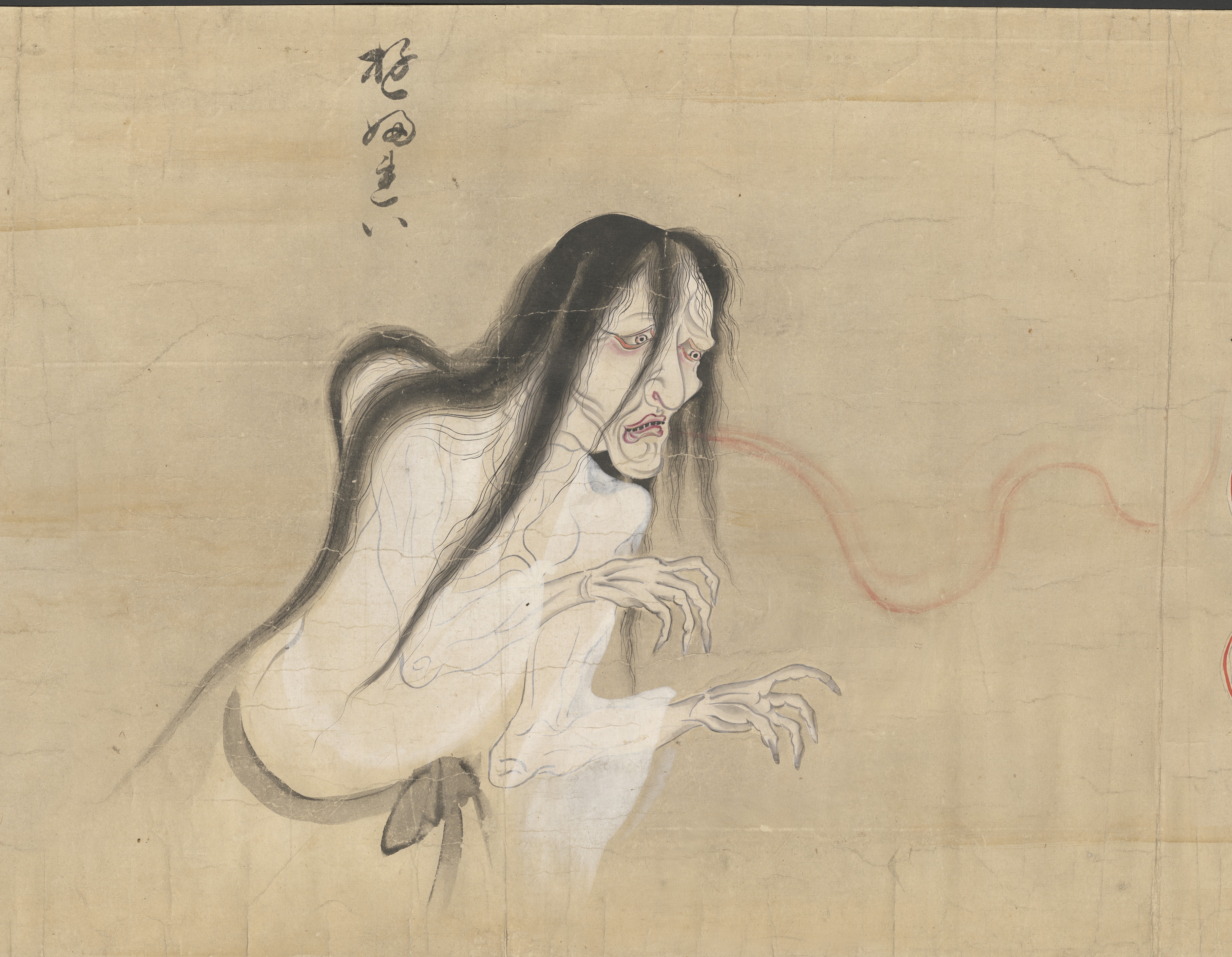|
The Ghost Cat And The Mysterious Shamisen
, or ''Ghost Cat's Mysterious Shamisen'', is a 1938 Japanese horror film directed by Kiyohiko Ushihara. Produced by ShinkŇć Kinema, it stars :ja:ťąīśú®śĺĄŚ≠ź, Sumiko Suzuki, an actress known for her roles in KaibyŇć#In film, "ghost cat" films (''kaibyŇć eiga'' or ''bake neko mono''). Premise Mitsue is a popular stage actress and the lover of a ''shamisen'' player named Seijuro. She jealously murders two other objects of his affection: Okiyo, a young woman from a samurai family, and Kuro, a cat. The spirits of Okiyo and Kuro then merge into a YŇęrei, vengeful ghost. Cast * :ja:ťąīśú®śĺĄŚ≠ź, Sumiko Suzuki as Mitsue * Kinue Utagawa as Okiyo Release ''The Ghost Cat and the Mysterious Shamisen'' was released in 1938. In October 2018, the Indiana University Cinema held a 35 mm movie film, 35 mm screening of the film. Two months later film film also screened at the Metrograph independent movie theatre in Manhattan, New York. References External links * {{DEFAULTSORT:Ghost Cat ... [...More Info...] [...Related Items...] OR: [Wikipedia] [Google] [Baidu] |
Kiyohiko Ushihara
was a Japanese film director most famous for his gendaigeki of the silent era. Career Born in Kumamoto Prefecture and graduating from Tokyo University, Ushihara joined the Shochiku studio in 1920 on the invitation of Kaoru Osanai. Starting out by helping on the script to Minoru Murata's Gorky-influenced ''Souls on the Road'', he made his directorial debut in 1921 and later directed adaptations of such works as Victor Hugo's ''Les Mis√©rables'' under the title ''Aa mujŇć''. In the mid-1920s he went to America to study Hollywood filmmaking, working under Charlie Chaplin. He returned to film romantic comedies and action films starring Denmei Suzuki and Kinuyo Tanaka such as '' Shingun''. Between 1928 and 1932 he co-edited the journal ''Eiga kagaku kenkyŇę'' (Scientific Studies of Cinema) with Murata. He left ShŇćchiku in the early 1930s and worked at studios such as Nikkatsu, ShinkŇć Kinema and Daiei. Quitting directing following the Second World War, he starting to teach filmmaki ... [...More Info...] [...Related Items...] OR: [Wikipedia] [Google] [Baidu] |
YŇęrei
are figures in Japanese folklore analogous to the Western model of ghosts. The name consists of two kanji, (''yŇę''), meaning "faint" or "dim" and (''rei''), meaning "soul" or "spirit". Alternative names include , meaning ruined or departed spirit, , meaning dead spirit, or the more encompassing or . Like their Chinese, Korean, and Western counterparts, they are thought to be spirits barred from a peaceful afterlife. Japanese afterlife According to traditional Japanese beliefs, all humans have a spirit or soul called a . When a person dies, the ''reikon'' leaves the body and enters a form of purgatory, where it waits for the proper funeral and post-funeral rites to be performed so that it may join its ancestors. If this is done correctly, the ''reikon'' is believed to be a protector of the living family and to return yearly in August during the Obon Festival to receive thanks. If the person dies, however, in a sudden or violent manner such as murder or suicide, if the pr ... [...More Info...] [...Related Items...] OR: [Wikipedia] [Google] [Baidu] |
1938 Horror Films
Events January * January 1 ** The new constitution of Estonia enters into force, which many consider to be the ending of the Era of Silence and the authoritarian regime. ** state-owned enterprise, State-owned railway networks are created by merger, in France (SNCF) and the Netherlands (Nederlandse Spoorwegen – NS). * January 20 – King Farouk of Egypt marries Safinaz Zulficar, who becomes Farida of Egypt, Queen Farida, in Cairo. * January 27 – The Honeymoon Bridge (Niagara Falls), Honeymoon Bridge at Niagara Falls, New York, collapses as a result of an ice jam. February * February 4 ** Adolf Hitler abolishes the War Ministry and creates the Oberkommando der Wehrmacht (High Command of the Armed Forces), giving him direct control of the German military. In addition, he dismisses political and military leaders considered unsympathetic to his philosophy or policies. General Werner von Fritsch is forced to resign as Commander of Chief of the German Army fol ... [...More Info...] [...Related Items...] OR: [Wikipedia] [Google] [Baidu] |

